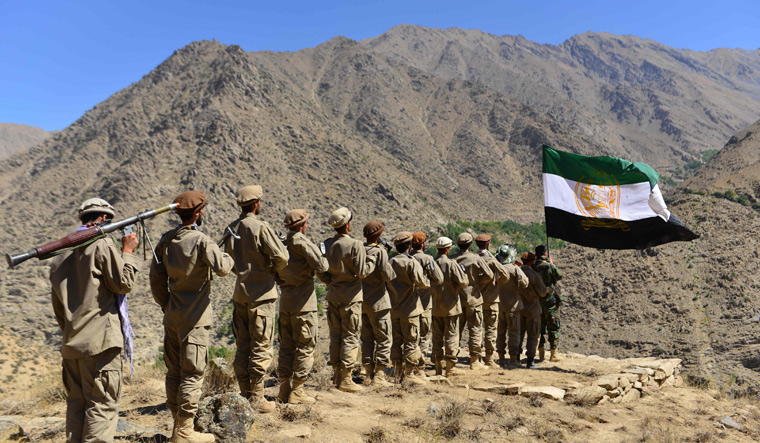It took almost two days to get a response from Hamid. His friends and relatives in Kabul were worried about his fate. Hamid, who works for an international NGO in Kabul, volunteered to take up arms in Panjshir, his home province, and join Ahmad Massoud’s National Resistance Front (NRF) to fight the Taliban. As news trickled in that the Taliban captured most of the valley, Hamid made a phone call from one of the mountain heights. “We are alive and we are fighting. The war is not over till we surrender or die. Do not believe rumours,” he told his family. The call was brief as he had to get back to the battlefield. Locals say the Taliban has cut off electricity, disabled mobile networks and internet, and stopped the supply of essentials to the valley.
The Panjshiris are shattered that their unique identity of being the only territory in Afghanistan that was never occupied by the Taliban or the Soviet forces has been lost. Hamid’s mother said she sent her son to the valley knowing he might die to keep the Taliban out of their “heaven”.
The people of Panjshir, which means the land of five lions, take their legacy seriously. They are evidently proud of former mujahideen and Northern Alliance leader Ahmad Shah Massoud, who was assassinated in 2001. Now, they unitedly follow his son, Ahmad Massoud, who is leading the fight against the Taliban.
The most effective tactic of the resistance forces has been to allow enemy troops to enter the small valleys and then cut them off through ambushes. Sources in the resistance forces say they captured hundreds of Taliban fighters in this manner.
A fighter of the resistance forces, however, conceded that the arrival of foreign troops in the valley caught them by surprise. “We are facing a barrage of reinforcements of Pakistani militants. We have killed and injured a number of foreign fighters including Chechens and Arabs. A large number of fighters have descended into the valley from every side possible,” he said.
Fahim Fetrat, a journalist and a member of the NRF, said the valley recently experienced drone strikes. Other sources, too, confirmed that they were aware of drones flying over key strategic positions. The overwhelming impression is that the Pakistani military is very much involved in the latest phase of clashes.
The intense clashes have been hard on the civilians. Many of them have vacated their houses and moved into the mountains, despite the absence of basic facilities. A Turkey-based Panjshiri who manages social media pages of the resistance forces said, “It has been days since I contacted my family. I just know that they left for the mountains. My school has been completely destroyed. Who knows, right now, the Taliban might be sitting in my house.”
Mohammed is another young man who managed to escape. “A few days ago, my friend and I went towards a mountain near my house. I did not see anyone around but a bullet whizzed past us. After a few seconds, we saw someone firing at us from a distance,” said Mohammed. He is now in Kabul, while his family has moved to the mountains.
Despite being under siege, the Panjshiris display indomitable fighting spirit. A mother, whose three boys are fighting with the resistance forces, said, “The Taliban forces have come here to get their long locks chopped and my sons will do that free of cost for them.” Another young supporter of the resistance forces, too, sounded optimistic. “For every Panjshiri martyr, 10-100 Taliban soldiers have lost their lives,” he said. “Although the world has turned a blind eye towards us, we have shown how to fight the Taliban.”


